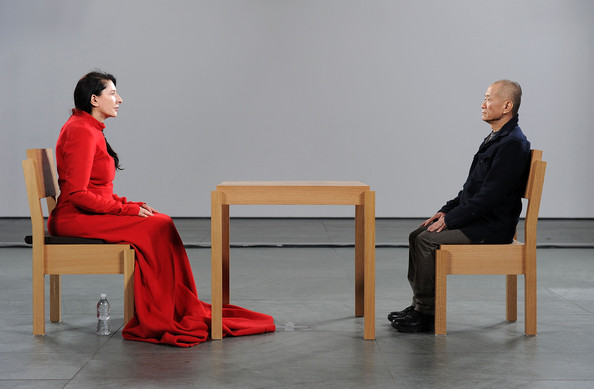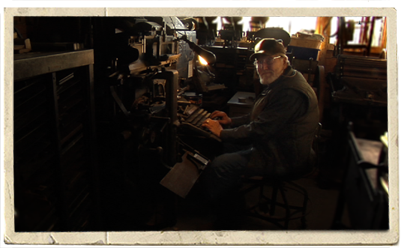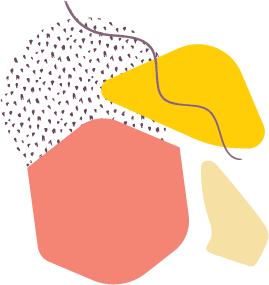Even when encountering masterpieces like the Mona Lisa, museum-goers often spend as little as 30 seconds pondering the work before moving on. But in the case of “The Artist is Present,” a hugely popular exhibit by performance artist extraordinaire Marina Abramović at New York’s Museum of Modern Art (MoMA), many attendees stayed for hours – some after waiting all night. Even more remarkable, the exhibit was breathtaking in its simplicity: two chairs facing each other, with Abramović sitting in one and audience members taking turns sitting in the other, gazing into each other’s eyes in silence. In true Abramović style, she remained in the chair for seven and a half hours each day – every day that the museum was open for three months – without eating, drinking or moving from her seated position, a feat of mental and physical endurance that is challenging even for a veteran of such performances. Part of a blockbuster retrospective exhibit of Abramović’s controversial work, which took place from March to May 2010 at MoMA, the work and the artist are now the focus of a captivating new HBO feature-length documentary, MARINA ABRAMOVIĆ THE ARTIST IS PRESENT. From first-time director Matthew Akers, the film is an exclusive, behind-the-scenes portrait of Abramović, who some affectionately call “the grandmother of performance art.” It will have its world premiere at the 2012 Sundance Film Festival in the U.S. Documentary Competition. MARINA ABRAMOVIĆ THE ARTIST IS PRESENT is by no means a typical “art film.” With total access granted by Abramović and MoMA, MARINA ABRAMOVIĆ THE ARTIST IS PRESENT is a mesmerizing cinematic journey inside the world of radical performance, and an intimate portrait of an astonishingly magnetic, endlessly intriguing woman who draws no distinction between life and art.Known for her extreme performance-art installations, many of them involving nudity and punishing forms of bodily deprivation, Abramović says she is one of a tiny number of artists of her generation still working in the field. She is also a glamorous art-world icon, a lightning rod for controversy and a myth of her own making. But after 40 years of facing skepticism about the artistic merit of her work, she says she’s tired of the “alternative” label: “I’m 63! I don’t want to be alternative anymore!”It is for that reason that the MoMA retrospective exhibit carried such intense personal and professional significance for Abramović. Not only is it the crowning achievement of her career, but she also sees it as an opportunity – perhaps her last – to finally put performance art on the mainstream map. “Performance art has never been a regular form of art,” she says in her trademark broken English and Yugoslavian accent. “It’s always been alternative since I was born, so I want it to be a real form of art and respected before I die.”Based on interviews with Abramović, her collaborators and a variety of art commentators, friends and fans, the documentary weaves archival footage of Abramović’s early works with images of her personal and professional life in the momentous year leading up to her MoMA extravaganza. Revisiting her controversial beginnings in the early 1970s, the film includes footage of her driving around a public square in a van while shouting numbers from a megaphone, taking psychoactive drugs to challenge social attitudes towards female mental illness, and mutilating and flagellating herself.MARINA ABRAMOVIĆ THE ARTIST IS PRESENT features interviews and scenes with commentators and public figures, including: Klaus Biesenbach, MoMA’s Chief Curator at Large, who conceived, titled and organized The Artist is Present; art critic Arthur Danto; Chrissie Iles, curator of the Whitney Museum of American Art; Abramović’s gallerist, Sean Kelly; writer Tom McEvilley; illusionist David Blaine; Oscar®-nominated actor James Franco and Ulay, Marina’s early partner and creative collaborator.The retrospective exhibit occupied several floors of MoMA, most of them dedicated to earlier chapters in Abramović’s career, with images and videos of installations, many involving fellow performance artist Ulay. The exhibit also features 41 young artists enlisted and trained by Abramović to “re-perform” some of her early installations. For example, in “Imponderabilia,” two artists stand face-to-face, completely naked on opposite sides of a doorway that the public can only squeeze through by brushing against the couple’s naked flesh—a piece originally performed by Abramović and Ulay.The main focus of the retrospective, however, is the new exhibit, in which Abramović herself sits in a chair under bright spotlights opposite an empty chair in which members of the public are invited to sit for as long as they want, gazing into Abramović’s eyes. A seemingly endless parade of people lines up for the opportunity, many of them returning to repeat the experience, sitting multiple times on different days. Some sit for as long as ten hours.The experience is astounding as a social leveler, drawing people of all ages, races and walks of life. As the exhibit nears its end, the lines grow longer and the numbers of would-be participants swell. To guarantee time with Abramović, some camp outside MoMA to get a number, rushing to the exhibit as soon as the museum doors open. As a result of the “direct energy dialogue” between Abramović and the public, an emotional breakthrough occurs, Abramović says. And so it seems to, with numerous sitters shedding tears or beaming transcendent smiles. In all, an estimated 750,000 people see the show.For Abramović, the piece is the longest-duration solo work of her career, and by far the most physically and emotionally demanding she has ever attempted. When she conceived it, she says, she knew instantly that it was the right piece, because the mere thought of it “made me nauseous.” Says MoMA curator Klaus Biesenbach, “When she had this idea, I thought, ‘God, she’s going to kill herself.’” But despite the palpable pain and exhaustion that set in as the weeks turn to months, she never even considers giving up, he says.Perhaps the film’s most moving scene occurs when Ulay occupies the seat opposite Marina. The two artists shared an emotionally intense and colorful history spanning over 12 years, living in a van in Europe and performing together, before their relationship ended in suitably dramatic fashion: each walked from opposite ends of the Great Wall of China, met in the middle after covering over 1,500 miles each, then said good-bye. Sitting opposite each other in the MoMA exhibit, neither can hold back the tears. Eventually, to cheers from the crowd of spectators, they reach across to hold each other — something none of the other sitters is permitted to do. It’s a beautiful and deeply moving moment. From the story of their relationship and their intensely charged reconnection in the runup to the MoMA retrospective, a parallel Marina emerges — a flesh-and-blood foil to the art-world icon — a woman who is driven by passion, desperate for admiration, and maddeningly riven by contradictions.Matthew Akers is an accomplished producer, director, photographer and cinematographer known for his expertise in shooting cinéma vérité. He was the producer and a lead cinematographer on the six-part PBS television event “Circus,” and was a producer and camera operator on “Carrier,” a ten-part Emmy® Award-winning PBS television series (2008). He was also a producer and camera operator on “Nimrod Nation,” an eight-part Peabody Award-winning documentary series. Akers also worked as a cinematographer on numerous films, including the HBO documentaries “BACK IN THE HOOD: GANG WAR II,” “HEIR TO AN EXECUTION” and “ELAINE STRITCH: AT LIBERTY.”MARINA ABRAMOVIĆ THE ARTIST IS PRESENT is an HBO Documentary Films presentation of A Show of Force production, directed by Matthew Akers; Produced by Jeff Dupre and Maro Chermayeff; Director of Photography, Matthew Akers; Co-Directed by Jeff Dupre; Edited by E. Donna Shepherd; Co-Editor Jim Hession; Original Music by Nathan Halpern; Co-Produced by Francesca von Habsburg and Owsley Brown III; For Dakota Group, Ltd: Executive Producers Stanley Buchthal, Maja Hoffman & David Koh; For HBO: Senior Producer, Nancy Abraham; Executive Producer: Sheila Nevins.
Summary info for schedule – will be hidden on film page

Marina Abramović: The Artist is Present
105-minutes
Screening day / time
Marina Abramović: The Artist is Present
Filmmaker(s)
- Jeff Dupre – Director
- Matthew Akers – Director
- Beth Levison – Consulting Producer
Running Time
Genres
Marina Abramović: The Artist is Present
Filmmaker Notes:
The first time I met the legendary, radical performance artist Marina Abramović, I was immediately surprised and seduced by her warmth and charm. More astonishing was her unconditional willingness to open up her entire life to my camera – a rarity in the documentary world. On the other hand, I also knew that her openness posed a peculiar sort of challenge. Marina is someone who has spent her whole career blurring the lines between life and art. How would I know when she was performing for the camera or not? Additionally, I was skeptical of performance art. Though I was well acquainted with Marina’s place in art history, performance by its very definition is ephemeral and only a first-hand encounter can allow you to experience its full transformative power. I had to rely on historical texts, video documentation, and eyewitness accounts of her work in order to learn about it. It was one thing to be seduced by her as a subject and another thing to allow myself to be seduced by her myth.The two main goals I set for myself in the beginning were to figure out how to make the subject appeal to a wider audience than just the rarefied art world and to avoid the trap of making a plodding biopic-style film. Right away I discussed my views on performance art with Marina, and not only did she seem to admire a skeptical approach, but she seemed totally energized by the challenge. After all, this is someone who has spent nearly four decades unfazed by the question, as she states in the film, “…but why is this art?” Throughout the next ten months, I documented nearly every waking moment of Marina’s life. I followed her to six countries, shooting hundreds of hours of her encounters with colleagues, friends, critics and her reconnection with Ulay – her lover and collaborator of 12 years. I also captured the entirety of a new performance that she did in the Atrium of MoMA. One thing that was clear after studying Marina’s oeuvre was how integral the public had often been in the completion of the work. I figured that, if nothing else, the sheer potential for spectacle or conflict in this new work could be mined for drama. The museum, understandably, worked hard to minimize the chaos. They were not always successful, however, as the public could be quite persistent in “punking” the performance. Fortunately for Marina, her life never seemed genuinely threatened. Over the course of the three months, it gradually became clear to me, and the rest of the filmmaking team, that the potential physical risk of the performance had less resonance than some of the more philosophical, emotional, and intellectual concepts.Vulnerability, human connection, projection, sacrifice, and perception of time were some big ideas that came into focus. Marina talked about it as a culmination of everything she had been striving for her whole life – a statement that I initially found confusing, since the work involved what she also stated was “something that was close to nothing.” Was she striving for nothing? It took me a while, but eventually I did begin to grasp what was going on in the performance. It was like a slow burn. I had to spend an enormous amount of time simply watching and thinking. We live in such an overly mediated world and the notion of simply slowing down and doing literally nothing is unfortunately a radical concept. Ulay talks about how disturbing people found their performance “Night Sea Crossing,” as it involved silence, fasting, and motionlessness – three things discredited in the Western world. It’s as if our daily electronic rituals – surfing the web, watching television, etc. – are working to construct a barrier between us and the present. It takes a while to simply deconstruct that edifice before one can understand how profoundly simple it is to exist in the moment. I had to retrain my brain.My initial concern about Marina’s more theatrical side creeping in and fueling my skepticism was quelled by the sheer austerity of the performance. Also, the work, while absolutely grounded in Marina’s persona, simultaneously and paradoxically had nothing to do with her. Instead of looking into Marina’s eyes and seeing the artist, the participants were often seeing what they would refer to as projections of themselves. It became clear to me that “The Artist Is Present” was undeniably valid and, moreover, very powerful.When it came time to edit and figure out how to incorporate all of these ideas, it was a bit tricky. Fortunately, I worked with a great team of people. We went back and forth weighing the pros and cons of building an artifice for those concepts through editing and sound design, versus a starker observational approach. In the end, we tried to strike a balance somewhere between both worlds. We realized that since we could never truly represent the experience of witnessing the performance first-hand, the raw footage was not necessarily an accurate representation anyhow. It became necessary for us to attempt to make a separate work of art altogether. It’s always hard to leave material on the cutting room floor, but I found it especially heartbreaking on this film. However, just as Marina figured out a way to pare down and simplify in this new performance, we eventually were forced to do the same in the edit. We chipped away until what emerged surprised me. There are many truths to this tale and this is simply one. Instead of a strictly critical examination of the different aspects of Marina’s life and this new performance, the film took on a more impressionistic lyrical quality. In my wildest dreams, I could not have imagined what a sensation the performance would become. My hope is that the film’s audience will have an experiential encounter with the concepts in Marina’s work in a way that might reveal something about themselves, as it certainly did for me. – Matthew Akers



